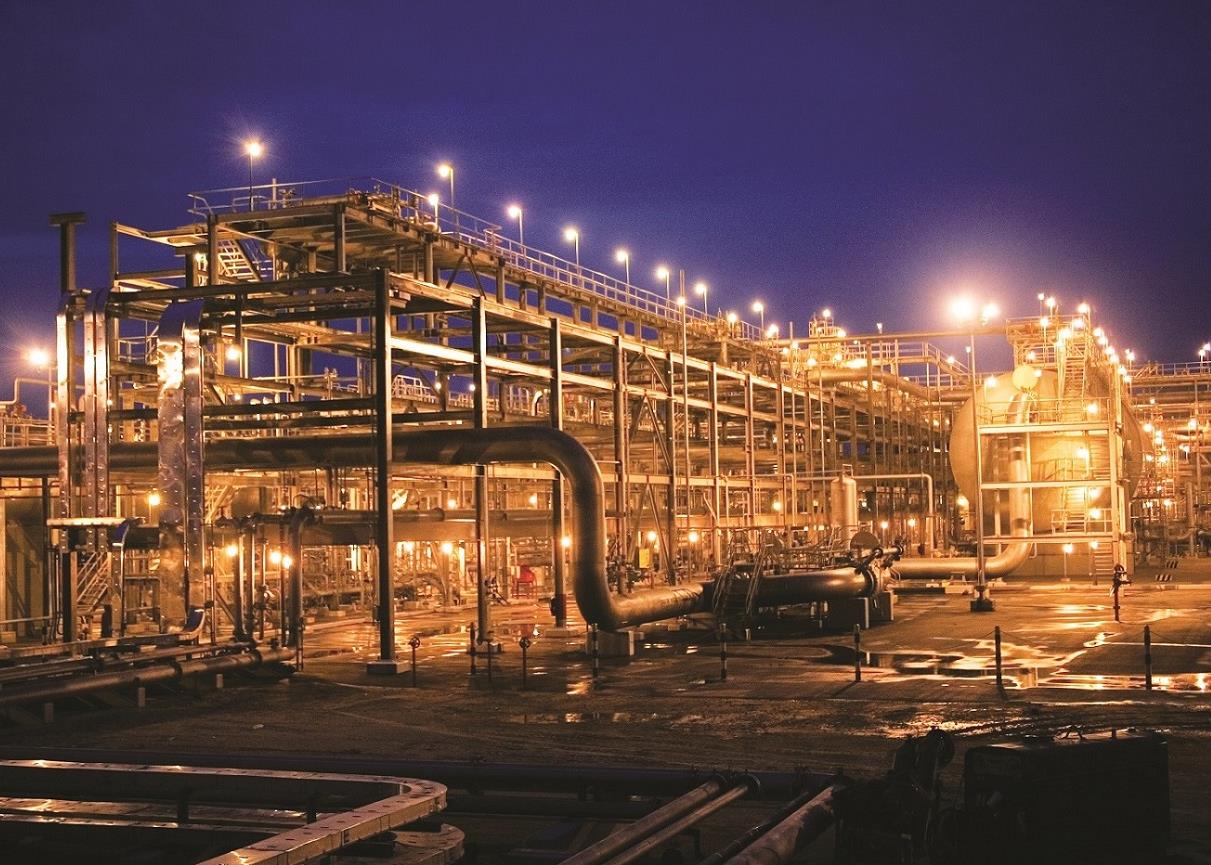
Riyadh has embarked on a bold scheme to boost the kingdom’s electricity generating capacity, with a huge programme of works using private finance to build new power plants and expand existing ones
Riyadh plans to encourage the private financing of future power plants, but state-run Saudi Electricity Company (SEC) remains at the heart of the government’s efforts both to expand generating capacity and liberalise the power sector. SEC currently owns power plants generating more than 84 per cent of the kingdom’s electricity.
The government’s plans are bold. It wants to bring much greater private investment into the kingdom’s electricity sector by unbundling and deregulating its generation, transmission and distribution industries.
In 2007, Saudi Arabia had an installed power generation capacity of 37,154MW. But population growth of almost 2 per cent a year, combined with robust economic expansion – real year-on-year growth in gross domestic product (GDP) was 4.9 per cent in 2008 – is in turn driving growth in demand for electricity.
Annual growth in demand is running at up to 8 per cent and the kingdom’s power sector regulator, the Electricity & Cogeneration Regulatory Authority (Ecra), says an additional 35,000MW will be required over the next 10 years to meet projected demand and to build up reserves of 15 per cent of generating capacity. This will require capital expenditure of $53bn.
The government’s strategy to increase power-generating capacity is two-pronged, looking both to the SEC and to independent power projects (IPPs) as procurement models.
Building capacity
SEC is in the front line in the government’s efforts to build power capacity as quickly as possible, and the long-mooted move to break the company down into its constituent parts is now imminent.
Currently, the company owns 49 generating plants around the country and generated 30,670MW of power in 2007. Formed in 2000 following a royal decree that merged Consolidated Electrical Companies and the projects of the Electricity Corporation into one company, more than a quarter of SEC was subsequently sold off and the company is now owned 74 per cent by the government, 7 per cent by Saudi Aramco and 19 per cent by the Saudi public. It is listed on the Saudi stock exchange (Tadawul).
Such is the SEC’s size that it has a virtual monopoly in generation, transmission and distribution within Saudi Arabia, and is one of the largest corporations in the country. It is by far the largest utility provider in the Gulf.
In September, SEC released its own forward projects plan, which details its work programme up until 2023. Between 2010 and 2018, the company intends to issue 33 tenders for new or expanded power plants, which will add a total capacity of 21,065MW to its current load.
It is a huge programme, covering all regions of the country, but initially concentrating on the northwest. The first projects – expansions of the Tabuk, Al-Wajh and Tabarjal power plants – are expected to come on line in 2012, with additional capacity at Rabigh and Duba coming on line soon after.
But over the course of the programme, the bulk of the additional capacity will be added in the east of the country, in the industrial Al-Jubail/Ras al-Zour/Al-Uqair triangle, and in the west near Jeddah.
From 2010, the plan includes extension work on new IPPs the SEC has already initiated. The first of these is at Rabigh, which will provide 1,200MW of new capacity by 2013. Separate projects at Riyadh and Qurayah will come on line in the following two years.
SEC is also a shareholder in other ongoing power projects around the country, including the Shoaiba and Shuqaiq independent water and power projects (IWPPs).
Although SEC does not intend to stop at just three IPPs, considering them the best contractual model, difficulties in attracting finance for the projects over the past 12 months have raised questions over their viability.
The news in May that the Ras al-Zour project is now to be built using an engineering, procurement and construction (EPC) contract neatly illustrates the concerns about the IPP model. Riyadh scrapped Water & Electricity Company’s plans to develop the Ras al-Zour plant as an IWPP after the company’s preferred bidder, a consortium led by Japan’s Sumitomo Corporation, fell apart in early 2009. Malaysia’s Malakoff International pulled out of the consortium in April and Sumitomo struggled to find a replacement.
Other electricity providers in Saudi Arabia and elsewhere around the region have also switched to EPC contracts, under which the contractor manages and funds the project itself, because of the global financial crisis.
SEC did, however, manage to secure $2.4bn in financing for the Rabigh IPP project in March, providing an impetus to its plans.
Amer al-Swaha, head of the IPP programme at SEC, tells MEED that given the success of securing financing for the Rabigh scheme “in a challenging financial period”, the programme is “a viable model”.
The company’s second IPP project, Riyadh PPII, is currently at the bidding stage. “SEC does not expect problems in its IPP programme and it is going as scheduled,” says Al-Swaha. “Some 30 per cent of SEC’s new generation facilities will be built through the IPP model and the rest of the projects will be financed through a mix of debt capital market financing, export credit agency financing and syndicate financing.”
Strong signal
SEC’s ability to secure financing for its projects was confirmed in June when the US and Canadian export credit agencies each extended it a loan worth $1.1bn over 12 years. An SEC statement at the time said SEC would use the loans to “finance the acquisition of power generation units with 2.9MW of capacity”.
The same month, the SEC issued a sukuk (Islamic bond) to the market worth up to $1.8bn, with a five-year maturity. Ratings agency Fitch assigned it an AA- rating.
The company’s finances were given an additional boost in September, when the Saudi cabinet granted SEC an exemption from paying dividends to the government for the next 10 years. The decision effectively rolls over the existing arrangement, which has been in place since 1999.
The agreement is of significant value to SEC. If it had not been in place, SEC would have had to pay the government $578.7m in dividends last year alone. The arrangement sends a strong signal of the government’s commitment to the development of the power sector in the kingdom.
In addition to raising finance and securing support from the government, SEC has also streamlined its own operations. In 2008, it made 800 staff redundant, and it intends to reduce its workforce by up to 5,000 workers by 2012.
These moves have given the company a solid foundation from which to launch its expansion programme. By mid September, SEC had given its approval to more than $2bn worth of contracts out of a total anticipated expenditure of more than $21bn by 2012.
Contracts awarded in September alone included the expansion of the Al-Qurayyah combined-cycle power plant, awarded to a partnership of the local Arabian Bemco Contracting Company and South Korea’s Hyundai Doosan Heavy Industries & Construction; a contract to connect the Kandarah-Jeddah grid, won by Saudi Arabia’s Alfanar Construction Company; and a contract to connect the Mecca West substation with the power grid, awarded to Saudi’s Deem Company for Contracting.
What remains unclear, though, is the precise structure that SEC will adopt as it moves into its expansion phase. US consultant Booz & Company has already completed a study on the power generation side of SEC.
The study’s findings are expected to be implemented shortly, with the generating division split into four separate generation companies, each with a generating capacity of about 9,000MW. The restructuring will take up to three years.
Al-Swaha says the new generating structure “will not be divided along regional lines; rather the restructuring will involve setting up four new generating companies that consist of portfolios of existing power plants of different types, fuel and locations, depending on economic factors, to ensure that those companies are competitive with each other from the start”.
SEC is also expected to hive off its power transmission and distribution branches into two separate companies and Booz & Company was appointed in late August to carry out a study into this.
Booz & Company is set to deliver its findings in November. Al-Swaha was not prepared to divulge details prior to the report’s publication, saying simply that the report would “indicate the best practice for forming and operating these companies as subsidiaries of SEC”.
It would appear, though, that both the transmission and distribution arms will operate under an umbrella organisation called the Saudi Grid Company (SGC). SEC would be turned into a holding company, retaining ownership of SGC and the four separate generation entities.
Privatisation plans
It is also understood that these entities, and perhaps SEC itself, would eventually be handed over to private ownership. But that is some years away. Al-Swaha confirmed that “there is no specific timeframe for this”.
The most obvious obstacle to such a move is subsidies. Electricity tariffs remain low in Saudi Arabia and, as long as this remains the case, privatisation would be unprofitable. But removing subsidies is politically sensitive and the government will face widespread resistance to any attempt to lift them, even gradually.
But eventually the government will have to go down this route. Not only do subsidies cost it dear and deter potential investors, but they also push up demand by failing to offer any incentive or reason to curb usage.
In 2008, Ecra recommended reforming tariffs, aligning them closer to the market, while ensuring the new tariff structures made allowances for low-income consumers.
Perhaps of greater immediate concern is the question of where the fuel to power SEC’s expansion plans will come from. The Saudi authorities have long favoured gas, but a shortage of feedstock has meant that new plants will have to rely on oil-based-fuel.
The concern of the Saudi authorities is that the more oil is diverted into power generation, the more this eats into its oil export revenue, reducing the funds available to finance its development and plans. These concerns are not so drastic as to delay SEC’s expansion programme. The government’s commitment to the development and upgrading of its electricity infrastructure means that sufficient feedstock – in whatever form – will be made available.
Meanwhile, SEC will remain in government hands for most, if not all, of this period, ensuring that its access to future funding remains implicitly backed by a sovereign guarantee.
You might also like...

Egypt resumes power cuts
18 April 2024

Petrofac awards carbon capture sub-contract
18 April 2024

Neom tenders Oxagon school construction
18 April 2024

Clarifications advance for Neom renewables
18 April 2024
A MEED Subscription...
Subscribe or upgrade your current MEED.com package to support your strategic planning with the MENA region’s best source of business information. Proceed to our online shop below to find out more about the features in each package.








